My scouting mission proved fruitless. I’d risen well before dawn, drove to a 50-acre Osceola turkey hotbed that annually produces two birds, walked to the center of it, and had nothing to show for it. No gobbling, no birds spotted … nothing.
A client was due to arrive and hunt in two days. The dilemma? That property was the one outfitter Jeff Budz of Tag It Worldwide had reserved for the client I’d be guiding. As a guide, I felt pressure mounting on my shoulders. The property must produce as it always had in the past.
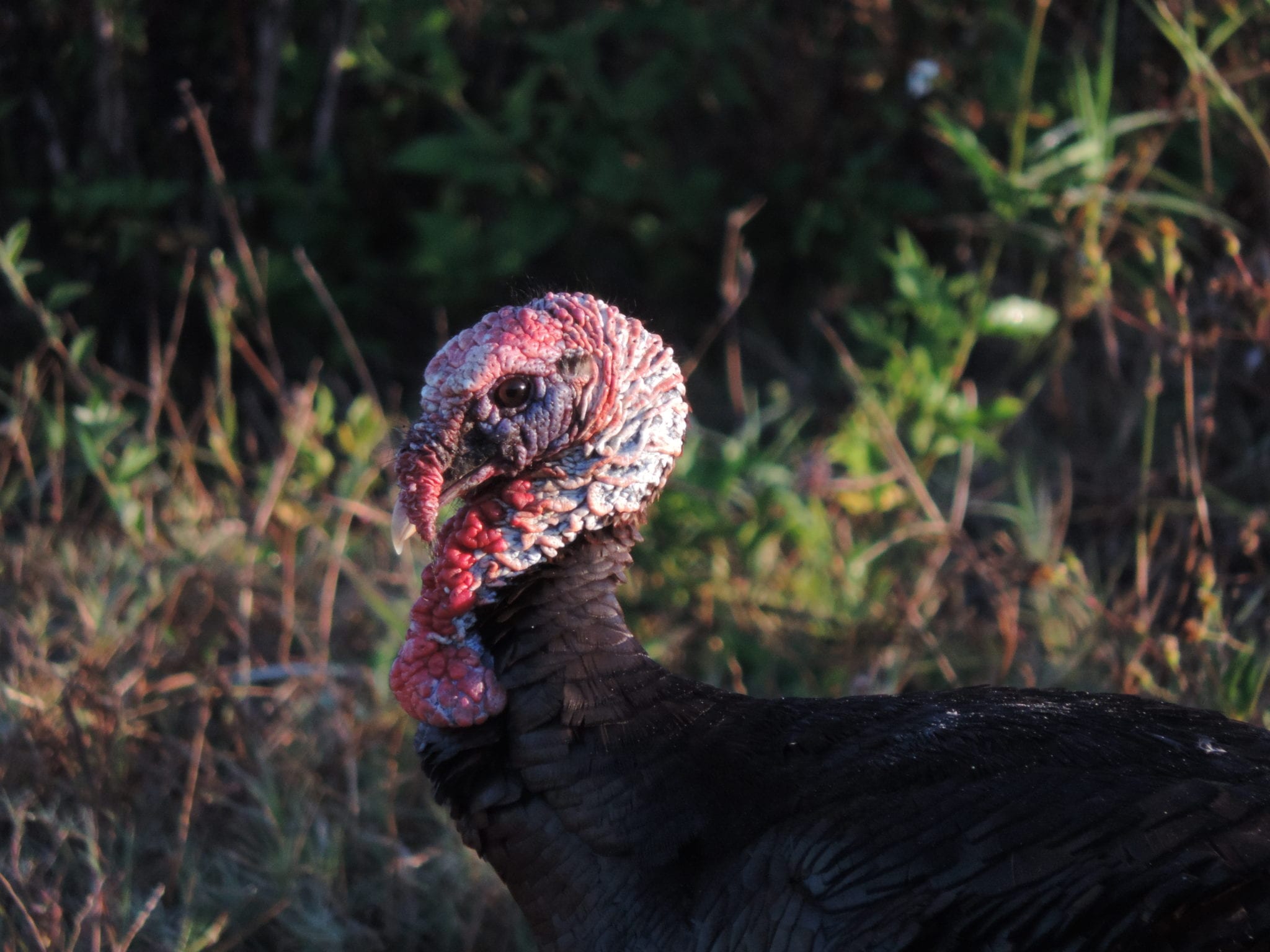
Eastern vs. Osceola. Is there really a difference?
The following morning, I arrived at the same property, and walked to the east-most fringe that borders a somewhat-busy subdivision — a couple hundred yards from where Budz normally puts clients. My path to the property gate was an old railroad grade. As I neared the gate, I heard a faint gobble. I first suspected he was far away, but soon remembered that Florida’s dense canopy and humidity work to squelch noises. Yep, he was within 150 yards.
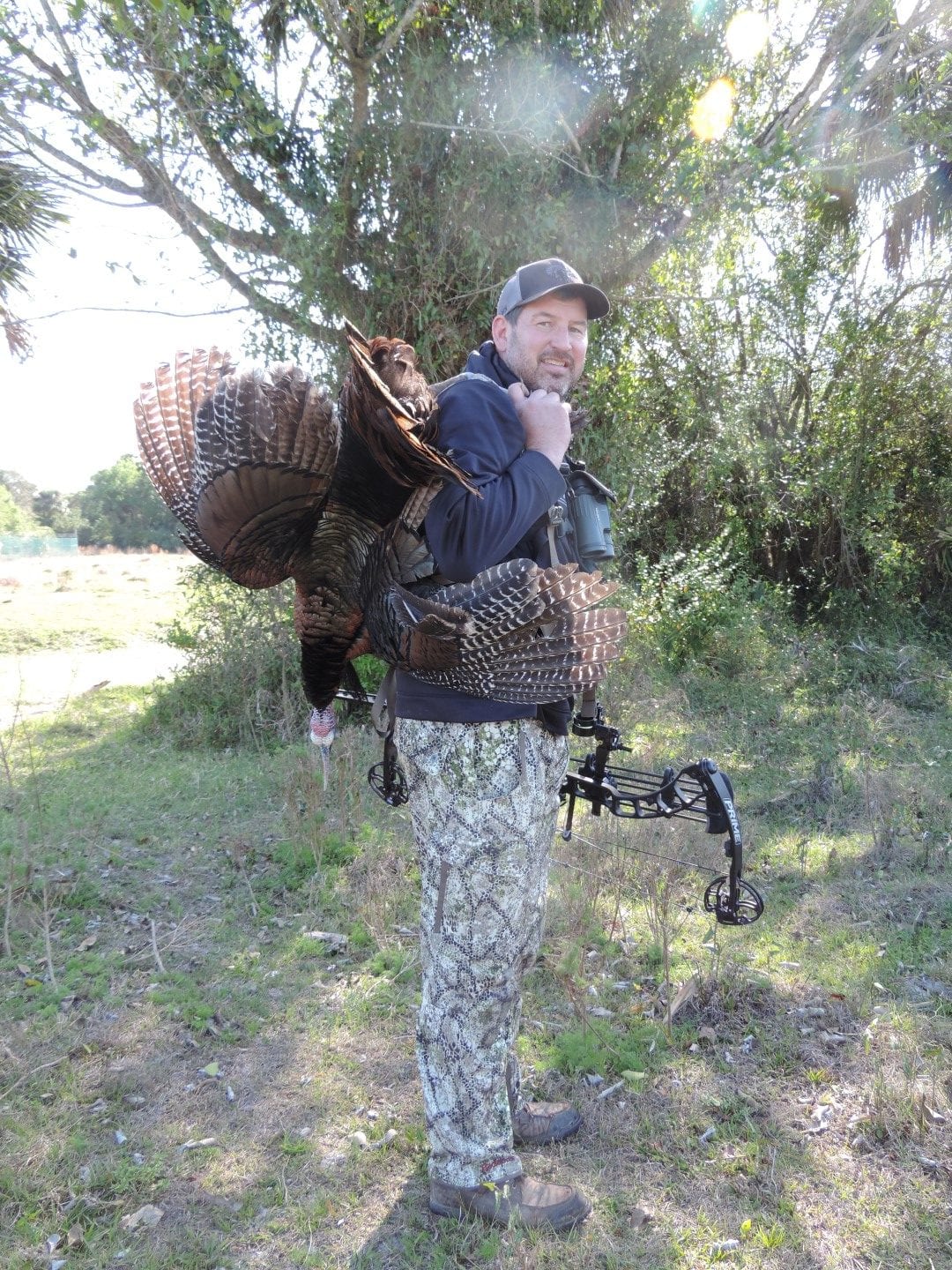
This hunter was in the right place at the right time to kill his Osceola gobbler with a bow.
From a hide, I listened as he gobbled incessantly. I even watched him flutter to the ground in someone’s driveway at the first wink of daylight. With all this info, I was sure someone would be losing their strutting yard ornament the following morning, but under one condition: my client’s ability to call him onto Budz’s lease and bust him with a well-placed arrow.
I met my client in the predawn darkness that next morning, then led him to the property. We parked in a pasture and traced our way to my predetermined setup location. At 60 yards from the property gate, we were close enough that the bird would hear my client’s calling, yet far enough not to disrupt any subdivision residents.
I slowly popped open the Double Bull blind, then crept 30 yards closer to the gate where I pitched some tree talk toward the roosted tom (granted he’d chosen the same roost as the morning prior). He gobbled back.
Since the hunt was being filmed, I figured two guys in the blind were enough, so I tiptoed back to the blind, wished my client a good hunt, and returned to my truck. I wanted to be a fly on the wall, but knew I needed to handle some writing assignments, so I drove a couple miles to the nearby Dunkin’ Donuts.
The hot coffee barely touched my lips when I received a text from my client that he killed the tom at 4 yards, standing in the decoys.
This was a hunt for a true, classic Osceola turkey. It serves as a prime example of why Osceola turkeys makes for some of the funnest turkey hunting of the year. But some hunters mistakenly assume that every turkey in Florida is an Osceola. Not the case. The north part of Florida is home to the Eastern subspecies of wild turkey, much like you’d find across the rest of the eastern U.S. But when you keep driving deeper south, you’ll eventually run into the land of the Osceola gobbler.
Here’s a closer look at the difference.
Florida’s Two Turkeys and the Dividing Line
Osceola turkeys have made Florida world-famous as a turkey destination. Why? It’s the only place in the world with a wild Osceola population.
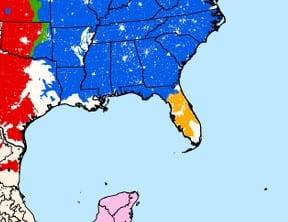
South Florida is dominated by Osceola turkeys (orange).
Therefore, it’s the most prized wild-turkey subspecies because of the supply-and-demand. Opportunities to hunt them are limited. No matter how you do it, it’s a pay-to-play game if you want a legitimate chance to kill one with a bow.
Now, Florida is also crawling with Eastern gobblers. This means that you must know where to hunt in Florida if you’re specifically after the Osceola. The NWTF (National Wild Turkey Federation) recognizes Osceola gobblers as those populations in central Florida and stretching to the south-most part of the state. Above that could be hybrids, and north-Florida turkeys are recognized as pure Easterns. For more specific information regarding the two subspecies and their range in Florida, refer to the NWTF’s subspecies map.
Eastern Vs. Osceola
At a glance, the Osceola gobbler looks quite like the Eastern subspecies. However, the Eastern subspecies ranges across the Midwest, East and South, with populations in 38 states and multiple Canadian provinces, per the NWTF. Of course, a closer look at the Osceola sheds light to its distinctive attributes.
First and foremost, unlike Easterns, Osceola toms rarely break 20 pounds, with most weighing 14-18 pounds, and some weighing even less. This scrawny build makes their legs appear longer, which I surmise helps when they tread through Florida’s wet, swampy terrain. Next, their wings are black with white streaks, where Eastern gobblers have white wings with black bars. Yes, the Osceola is a dark, dark bird. Beards are said to be shorter on average than Eastern turkeys, but I’ve seen multiple Osceolas with 9- to 10-inch beards. And, their spurs can get wicked sharp, some measuring 1 ¾ inches or longer on a real thumper.
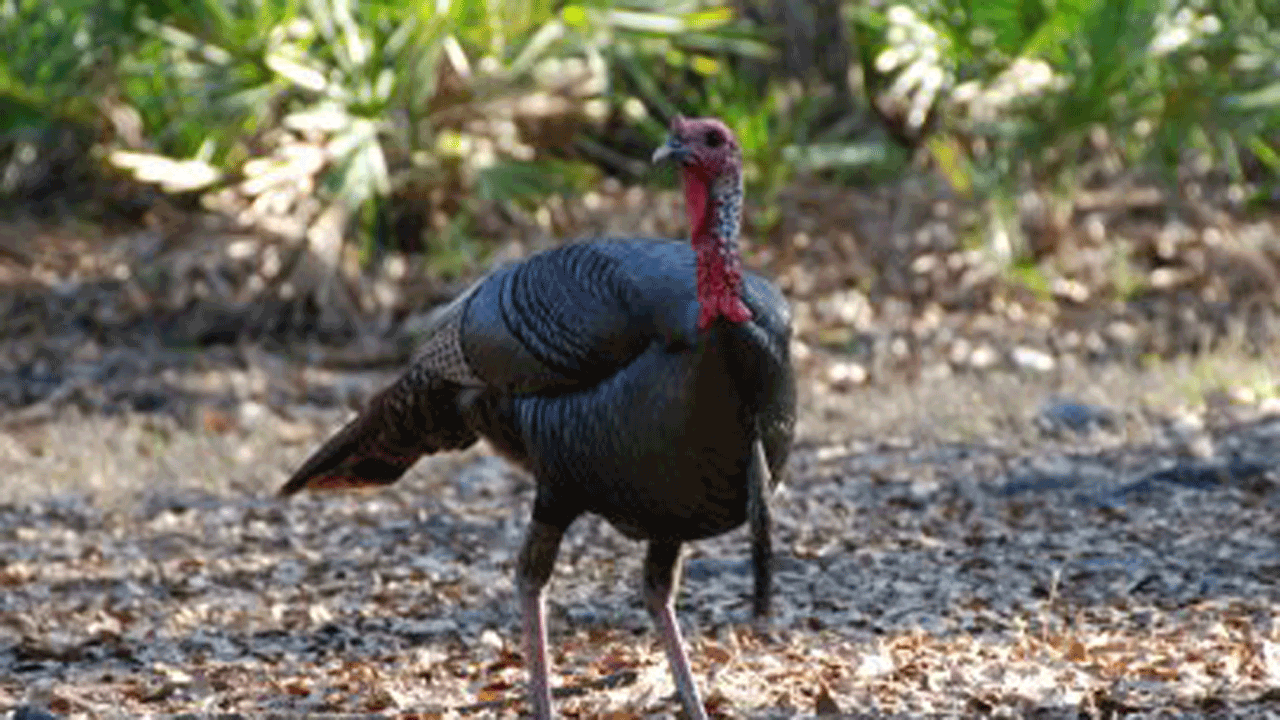
Swamp gobblers are not all created equal.
Hunting Strategies
Now, despite the cosmetic differences, an Osceola is still a turkey, and hunting tactics used to bag Easterns can be deadly on Osceolas. In fact, I use the same diaphragm and slate calls in Florida as I do in Wisconsin, and I’ve had outstanding success.
The Osceola is dubbed the toughest turkey subspecies to call in, but this is relative to hunting pressure. On leases with light hunting pressure, I’ve found that Osceolas are the easiest to call in. However, if you hunt public land, you’ll find they truly are difficult to deceive via calling.
The real difference between hunting turkeys in Florida versus the Midwest is that, as I mentioned earlier, the Sunshine State is dense with foliage and humidity. Budz’s exact words when he first taught me about Osceolas were, “If you hear a gobble, he’s close.” The only real exceptions are pastures where you can see for a few hundred yards, but even then, the gobbles just don’t carry like they do in the Midwest or the West.
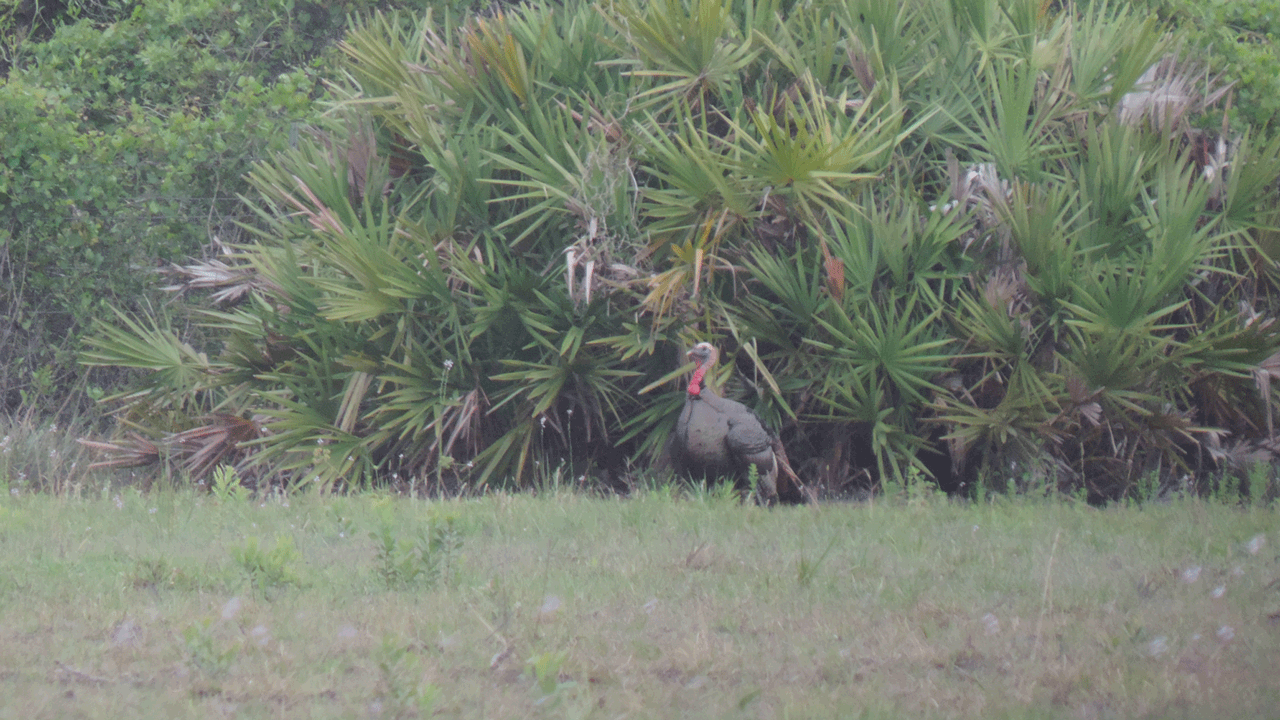
Florida’s foliage and humidity are thicker than stew. Gobbles are difficult to hear unless a bird enters an opening or pasture.
I bolster my calling with a Dave Smith jake and hen decoy. My jake has been battered countless times by sharp-spurred Osceolas. On private land with light pressure, those decoys are dynamite.
In contrast, while hunting a non-quota wildlife management area, I had a jake spot my Dave smith hen decoy, only to become Roadrunner before going airborne. Places with high hunting pressure like that are a poor place to use decoys, and you’ll often have to employ more of an ambush strategy to be successful.
Options for Osceolas
Going guided with a reputable outfitter is the surest way to get your chance at an Osceola, but it does cost at least a couple thousand dollars or more. Yet, a trip to Florida is already expensive for most folks, so paying a couple thousand dollars to increase your chances for success is a wise move, especially if you’re trying to nab an Osceola to complete your wild-turkey Grand Slam. I suggest looking into a hunt with Budz if you’re serious about killing an Osceola. If you hunt with him, listen to what he tells you to do, and shoot straight, you’ll get your tom. You can find more info at Tag It Worldwide’s website.
Now, if you’re the ambitious DIY type, there are better options than hunting a non-quota wildlife management area like I did. Florida offers Special Opportunity Turkey hunts. Hunters can put their name in the hat as many times as they like for $5/chance. Though these permits are a tough draw, a hunter who rolls $100 or more into chances greatly increases his/her odds of drawing. And these Special Opportunity Hunts are a quality hunt, almost comparable to a private-land deal.
Another option is to apply for quota wildlife management areas where hunting pressure is substantially lighter than non-quota areas.
Bonuses
Florida is best known for beach vacations, making it the ideal stop for combining some time on the beach with your family along with your mission to kill an Osceola turkey. Depending on where you go, you can also take advantage of the abundance of hogs that make their home in the swamps of Florida. Deep-sea fishing, hog hunting, and time on the beach all make a Florida hunting trip one of the most enjoyable hunts you’ll take all year. So if you’re looking for the ultimate vacation and hunting trip, look no further than the Sunshine State.

 By
By 



